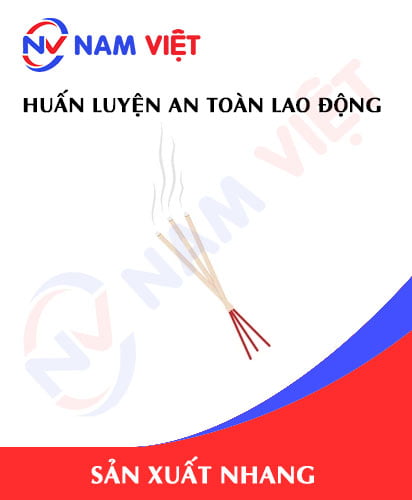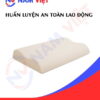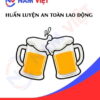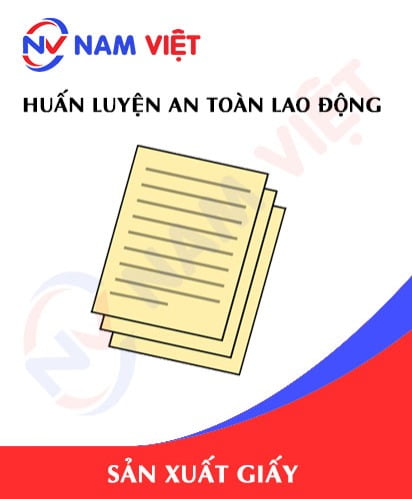Occupational Safety Training for Incense Stick Manufacturing
99,000 ₫
Note: The above price is calculated for one person, the price may fluctuate depending on the number of trainees participating in the course and the market movement. For more accurate price support, please refer to the price list or contact our consulting staff directly.
Occupational safety is an important issue in factory manufacturing incense sticks and needs to be addressed promptly to ensure the health and safety of workers, enhancing the reputation of businesses. The Occupational Safety Training course is one of the effective solutions to raise awareness of how to prevent occupational accidents for workers participating in incense stick manufacturing.
Table of Contents
Toggle1. Overview of Incense Sticks
a. What are Incense Sticks?
- Incense sticks are small burning products made from herbs, spices, and aromatic resins. They are used in religious activities, spiritual rituals, offerings, prayers for safety, making altars, or simply to create a pleasant fragrance at home. Incense sticks are categorized into types such as meditation incense sticks, safety prayer incense sticks, maternal incense sticks, funeral incense sticks, and agarwood incense sticks.
- Incense sticks are one of the products with a long history and tradition in Vietnam. However, recently, the manufacturing of incense sticks has faced many difficulties due to strong competition from other products and changing consumer habits.
- According to the 2020 Vietnam Incense Stick Market Report by Nielsen Vietnam Consulting Services LLC, the Vietnamese incense stick market is facing challenges due to declining consumer interest. There is also competition from other products such as candles, LED lamps, aromatic oils, etc. However, incense sticks still maintain their position during certain festivals, especially during Lunar New Year.
- Regarding production volume, according to the General Statistics Office of Vietnam, domestic incense stick production in 2020 reached 31,640 tons, down 1.8% compared to the previous year. However, sales revenue increased by 7.8%, reaching 260 billion VND.

b. Machinery for Incense Stick Manufacturing
The machinery for incense stick manufacturing includes:
- Ingredient mixer: This machine is used to mix materials such as wax, colors, and fragrances together.
- Candle pouring machine: This machine is used to pour the wax mixture into molds to create different shapes and sizes of incense sticks.
- Incense stick cutting machine: This machine is used to cut incense sticks to various lengths.
- Printing machine: The printing machine is used to print labels, images, and information on the surface of incense sticks.
- Packing machine: The packing machine is used to pack incense sticks in suitable packages to protect the product from damage and moisture during transportation and storage.
Depending on the scale and technology, manufacturers may use one or more types of machines in the incense stick manufacturing process.

c. Typical Incense Stick Manufacturing Companies
Currently, there are many incense stick manufacturing companies in Vietnam, some of the notable ones include:
- Phuong Dong Herbal Joint Stock Company: One of the trusted incense stick manufacturers. The company specializes in making incense sticks from natural herbs without using harmful chemicals.
- Nhang Viet LLC: A company specializing in making fragrant incense sticks from natural ingredients such as essential oils, herbs, fruits. Its products are highly rated for quality and design.
- Thanh Thinh Manufacturing-Trading LLC: A large incense stick manufacturer in Vietnam, providing fragrant incense sticks, scented incense sticks, safety incense sticks, bracelet incense sticks, room incense sticks, etc.
- Thuan Thanh Handicraft LLC: A company specializing in producing fragrant incense sticks, burning incense sticks, scented incense sticks, and safety incense sticks from natural ingredients like agarwood, flower buds, herbs. Products have diverse designs with ensured quality.
- Gia Viet Single Member LLC: One of the incense stick manufacturers in Vietnam, specializing in fragrant incense sticks, burning incense sticks, scented incense sticks, and safety incense sticks from herbs, essential oils, fruits. Products are manufactured under strict processes and guaranteed quality.
d. Specific Jobs in an Incense Stick Manufacturing Factory
Group 1
- CEO, deputy CEO, department heads in the incense stick manufacturing factory.
Group 2
- Safety officer: managing safety in the factory, designing safety procedures, supervising and urging employees to comply with safe working procedures.
Group 3
- Preparing raw materials: The first important step in incense stick manufacturing. Main materials include wax, colors, fragrances, baking powder, and brushes.
- Dissolving and mixing ingredients: Ingredients are heated to dissolve and blend into a homogeneous mixture.
- Pouring mixture into molds: Wax mixture is poured into molds in different shapes according to customer requirements.
- Cooling and solidifying: Molds are left to cool so that the wax mixture solidifies.
- Polishing: After solidifying, incense sticks are polished to create a smooth and shiny surface.
- Packing: Finally, incense sticks are packed and placed on the market for sale.
Group 4
- Office, service, sales, and marketing jobs.
- Production management, quality management, human resources management, materials management, financial and accounting management.
- Research and development of new products, designing packaging and product samples.

2. Overview of Safety Training for Incense Stick Manufacturing
In this article, we focus on Group 3, because Group 3 directly participates in the production process and faces the highest occupational safety risks. For reference on other groups, see here.
a. What is Group 3 Safety Training?
- Group 3 safety training consists of sessions equipping workers with awareness on preventing occupational accidents.
- The safety training course helps workers recognize and avoid hazards, reducing the risk of accidents during work.
REGISTER FOR SAFETY TRAINING SERVICE
b. Training Duration
Initial safety training
- Total training time is at least 24 hours, including assessment time.
- 8 hours theory on labor safety laws and regulations
- 8 hours theory on basic labor safety and hygiene knowledge
- 4 hours theory on specialized training content
- 2 hours practice on specialized training content
- 2 hours final theoretical assessment
The safety training center divides time into multiple sessions depending on workers’ schedules. Usually, there are 6 sessions over 3 days, provided the manufacturing company can arrange continuous learning time.
Periodic safety training
- Before the occupational safety card expires, workers who want reissuance must take periodic occupational safety training, with periodic training duration being at least 50% of the initial training duration.
Explanation: total periodic safety training duration is at least 12 hours, including assessment time. After completing the course and passing the test, workers will be reissued or have their occupational safety card renewed.
c. Training Content
| No. | TRAINING CONTENT | TRAINING DURATION (HOURS) | |||
| Total | Including | ||||
| Theory | Practice | Assessment | |||
| I | Labor safety laws and regulations | 8 | 8 | 0 | 0 |
| 1 | Overview of legal documents system on labor safety and hygiene. | 6 | 6 | ||
| 2 | Standards and technical regulations on labor safety and hygiene. | 1 | 1 | ||
| 3 | Specific regulations by state management agencies on safety and hygiene when constructing, expanding, or renovating facilities, manufacturing, using, storing, and inspecting machinery, equipment, materials, and substances with strict safety and hygiene requirements. | 1 | 1 | ||
| II | Basic knowledge on labor safety and hygiene | 8 | 8 | 0 | 0 |
| 1 | Basic knowledge of hazards and harmful factors in the workplace. | 4 | 4 | ||
| 2 | Methods to improve working conditions. | 1 | 1 | ||
| 3 | Safety culture in production and business. | 1 | 1 | ||
| 4 | Rights and obligations of employers and employees; policies on labor safety and hygiene; functions and duties of safety officers. | 1 | 1 | ||
| 5 | Safety and hygiene regulations, safety signs, safety guides, use of safety devices and personal protective equipment; first-aid skills, occupational disease prevention. | 1 | 1 | ||
| III | Specialized training content | 6 | 4 | 2 | 0 |
| Comprehensive knowledge of machinery, equipment, substances causing hazards; analyzing, evaluating, managing labor safety risks, safe working procedures with machinery, equipment, and substances requiring strict safety and hygiene compliance. | 6 | 4 | 2 | ||
| IV | Final assessment after training | 2 | 2 | 0 | 0 |
| Total | 24 | 22 | 2 | ||
See more training content of 6 groups
d. Occupational Safety Card
After completing the safety training and passing the test, workers will be issued a Group 3 Occupational Safety Card (commonly called Group 3 Occupational Safety Certificate).
The card shows full information: full name, birth date, specific job and working environment, training duration, red stamp, and signature confirming course completion.
According to regulations on card issuance in Clause 2 of Article 24 Decree 44/2016/ND-CP, there are two cases:
- If the employer and employee have a labor contract, the employer must sign, stamp, and seal the safety card for the trained Group 3 employee after the training course and passing the test.
- If the worker is freelance or seasonal without a labor contract, the training unit must sign, stamp, and seal the safety card after completing the training course and passing the test.

3. Identifying Hazards in Incense Stick Manufacturing
During the incense stick manufacturing process, several hazards may occur, including:
- Materials such as wax, essential oils, pollen, and fragrances, if not used properly, can cause fires or explosions, posing dangers to employees and causing damage to the factory.
- Raw materials such as wax, oils, and candles at high temperatures can cause burns to employees during manufacturing.
- Waste and dust generated during production can pollute the environment if not handled properly.
- Tasks such as cutting, bending, packaging, and transporting, if not performed correctly, can cause occupational accidents for employees.
4. Common Occupational Accidents in Incense Stick Manufacturing
Common occupational accidents in incense stick manufacturing may include:
- Fire and explosion: This is the most significant hazard in incense stick manufacturing. Using flammable fuel sources for the production process can cause fires or explosions if not handled properly or managed carefully.
- Burns: Workers often come into contact with chemicals and combustible materials during incense stick production. Without proper protective equipment or adherence to occupational safety procedures, burns may occur.
- Puncture or cuts from blades: The incense stick manufacturing process often involves using blades for cutting, molding, or smoothing incense sticks. Without proper protective equipment or following safety procedures, workers can get punctured or cut by blades.
- Toxic exposure: Using chemicals during incense stick production can pollute the air or environment, causing toxic exposure to workers if protective equipment is not used or safety procedures are ignored.

5. Safety Measures for Participating in Incense Stick Manufacturing
To safely participate in incense stick manufacturing, the following measures can be applied:
- Ensure full personal protective equipment, including helmets, safety goggles, masks, gloves, reflective clothing, and safety shoes.
- Follow the safety procedures and regulations of the incense stick factory, including guidelines on using machinery, materials, and chemicals during production.
- Regularly inspect and maintain equipment and machinery to ensure safety during production.
- Organize training sessions for employees on occupational safety skills and knowledge.
- Conduct regular safety checks to detect and address potential hazards during production.
- Supervise and evaluate the effectiveness of applied occupational safety measures and adjust when necessary.
- Periodically conduct workplace environmental monitoring in factories, collecting and analyzing harmful factors to reduce risks and prevent occupational diseases for workers.
6. Benefits of Occupational Safety Training in Incense Stick Manufacturing
An Toan Nam Viet provides businesses with the following benefits after completing occupational safety training courses in accordance with Decree 44/2016/ND-CP on occupational safety and hygiene:
- Employees can identify potential occupational hazards and take preventive measures to avoid accidents.
- Businesses can establish risk prevention measures in production, operation, and maintenance processes.
- Minimizes costs associated with workplace safety incidents.
- Continuous production helps increase labor productivity and product quality.
- Ensures compliance with occupational safety laws, reducing legal risks.
- Builds credibility and professionalism, enhancing the company’s brand.
An Toan Nam Viet’s training courses are solutions to prevent and mitigate external factors that may cause injury or, in severe cases, death.
REGISTER FOR OCCUPATIONAL SAFETY TRAINING SERVICE
7. Customer Feedback After Completing Incense Stick Manufacturing Safety Training
An Toan Nam Viet has many years of experience partnering with businesses across Vietnam, especially in the southern provinces. This responsibility is invaluable, and therefore, An Toan Nam Viet continually strives to professionalize its Occupational Safety Training. Our growth is driven by positive feedback and constructive suggestions from enterprises. Below are testimonials from our partners.
Hoa Dat Construction and Trading Joint Stock Company
“Nam Viet’s service has greatly simplified occupational safety and completing safety documentation for our work. The consultants were enthusiastic and responsive to our questions. Five stars for Nam Viet.”
See more customer interviews after using services from An Toan Nam Viet
8. Occupational Safety Training Capacity of An Toan Nam Viet
An Toan Nam Viet is a reputable and high-quality occupational safety training center in Vietnam. Training sessions are continuously conducted at factories, manufacturing plants, and construction sites nationwide (all 63 provinces of Vietnam).
REGISTER FOR OCCUPATIONAL SAFETY TRAINING SERVICE
Occupational Safety Training License
- An Toan Nam Viet has been inspected and certified by the Department of Occupational Safety under the Ministry of Labor, Invalids, and Social Affairs, confirming eligibility to conduct occupational safety and hygiene training. This reinforces our capacity in occupational safety training.

Materials and Lectures
- Before being used in occupational safety training courses, materials are reviewed to ensure accuracy and effectiveness.
- Our teaching methods follow An Toan Nam Viet standards, developed by experts in occupational safety training to maximize knowledge absorption for learners.
Facilities
- Controlling classroom factors affecting training increases teaching efficiency and knowledge retention.
- Our training facilities feature spacious classrooms meeting standards for area, lighting, and training equipment.
9. Nationwide Reputable Occupational Safety Training Center
At An Toan Nam Viet, we prioritize professional occupational safety training. Providing workers with knowledge to protect themselves is a contribution to building the nation.
To ensure training effectiveness, we meticulously prepare every detail, from tools, teaching equipment, manuals, documents, sound, and lighting.
Our occupational safety trainers are experts with many years of experience, including research on hazards in all industries and their prevention.
Lectures are practical and vivid, making knowledge easy for employees to understand. Training content always complies with Decree 44/2016/ND-CP.
Workers learn preventive measures and self-protection skills, applying them appropriately in real work situations.
Our training center proudly offers professional occupational safety training with the following advantages:
- Competitive training costs while ensuring quality.
- Flexible training schedules aligned with enterprise production.
- Fast certification procedures in accordance with the law.
- Experienced trainers with many years in the field.
- Classroom factors are controlled to improve teaching efficiency and learner knowledge absorption.
- Lectures are designed to suit occupational safety requirements in enterprises.
- An Toan Nam Viet works dedicatedly and professionally to support clients accurately and promptly.

10. Additional References for Incense Stick Manufacturing Safety Training
- Incense Stick Manufacturing Safety Training Materials (Incense Stick)
- Occupational Safety Training Materials
- Occupational Safety Training Tests
- Incense Stick Manufacturing Safety Quiz (Incense Stick)
- Incense Stick Manufacturing Safety Training Slides (Incense Stick)
1 review for Occupational Safety Training for Incense Stick Manufacturing
No comments yet















namchinh.haiphong341
Dịch vụ ở đây tốt nhé!